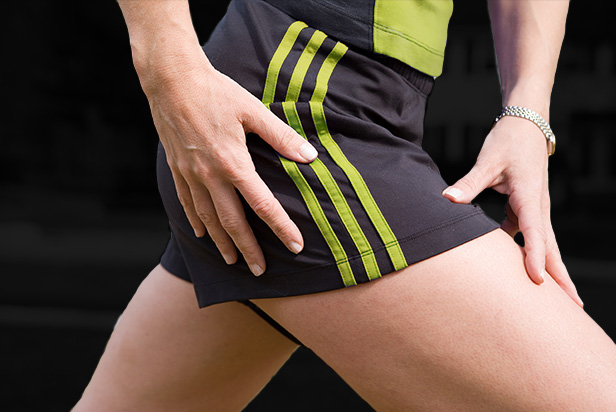Hip Flexors
Written by Randy Behr | June 30th, 2014 | Leave a comment

I’m having a slight problem with my hip flexors. Do you have any suggestions on how to stretch it out and get it back to normal?
First, anytime you have any inflammation or pain you should ice the area affected for 20 minutes at a time and no more than once per hour for up to three days. If the discomfort and swelling persists please see a physician.
Here is a quick anatomy lesson. Hip Flexors are primarily made up of two muscles; the Illiopsoas, which technically is made up of two muscles, the Iliacus and the Psoas Major and the Rectus Femoris.
Let’s focus on stretches first. Dynamic movements are very effective beginning with walking lunges (elbow on inside of ankle) forward and backward. Not only do these exercises stretch and strengthen the muscles, but they also work on balance, agility and joint integrity. This is crucial whether you are an athlete or a Service Member. Another stretch is to lay flat on the ground and pull one knee to the chest, while the other leg remains straight and in contact with the ground forming an “L” if possible. Another traditional stretch is kneeling down with one leg, while the other leg is up in a 90 degree angle and with the same hip that the knee is down gently push towards the ground (similar to when you genuflect in a pew in mass). All of these stretches will increase your movement in the hip region hopefully allowing for a comfortable pain-free range of movement.
As far as strengthening the hip flexors you must work the entire hip region, which consists of approximately 17 muscles. For simplicity it is broken down into four groups; the gluteal, the lateral rotator group, the adductor, and the iliopsoas groups. If you look at these different muscles groups you would notice that this area is very dynamic in terms of the different movements that are required of it. For example, the area requires a forward and backward, inward and outward motions along with various angles.
Additionally, if you are training these muscles for the PFA test you must perform dynamic movements that relate to the three activities being performed; such as A and B skips, ‘Froggies’, walking knee hugs, walking or running stairs, running hills (small incline), straight leg pull-backs, lead leg pick-ups and ‘fire hydrants’ to name a few.
As a compliment to the dynamic movements, resistance training should also occur such as squats, leg presses and adductor and abductor work. For additional and advanced benefits focus on hanging knee raises, physioballs activities (push-up position with both feet propped onto of the ball and raise knees to chest) and one legged squats.
Note: Individuals should begin with no weight and gradually work-up to using weights for one-legged squats.
As a reminder hip flexors are extremely important for not only athletic individuals, but also for everyday functional training of the Service Member. It is quite common for people to be tight in this area, usually men more so than women though. If the hip flexors are not developed or overdeveloped, tight “hip flexors” occur which can contribute to lower back pain by causing the pelvis to tilt forward. In order to keep this from happening stretch and strengthen the abdominal muscles and strengthen the lower back to improve the muscle balance between all the muscles of the hip region. Remember, stretching and strengthening the flexors is the key, along with an occasional massage, myofascial work as well as contrast baths.